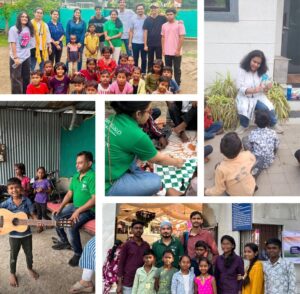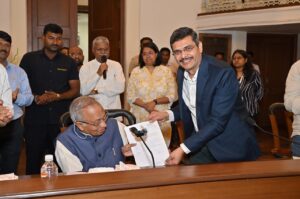Sawan 2025: Dates of Somwar Vrats, Rituals, and What to Eat While Fasting in the Holy Month of Shravan

Sawan 2025: Dates of Somwar Vrats, Rituals, and What to Eat While Fasting in the Holy Month of Shravan
Sawan — a month that holds the heartbeat of devotion for millions — is more than just a time on the calendar. It’s a sacred chapter in the Hindu year where hearts turn toward Lord Shiva, temples resonate with the sound of mantras, and faith takes center stage in daily life. Every year, the arrival of Shravan brings with it a wave of spiritual energy, as devotees step into a period marked by prayer, purity, and powerful mythological significance.
In 2025, the month of Sawan will be observed in North India from July 11 to August 9. In South and Western India, the observance will take place from July 25 to August 23. This sacred month offers a spiritual sanctuary — whether through Monday fasts, the ritual of abhishek (sacred bathing) performed with devotion, or by adopting a sattvic (pure and balanced) lifestyle. In Nepal and parts of Uttarakhand and Himachal Pradesh, Sawan is traditionally observed from July 16 to August 16, based on a solar calendar rather than the more commonly followed lunar calendar.
Sawan Somwar Vrat 2025: All Four Monday Fasting Dates
One of the most sacred observances during Sawan is the Somwar Vrat, where devotees fast and worship Lord Shiva every Monday. These fasts are believed to fulfill wishes, bring peace, and strengthen one’s spiritual resolve.
Here are the Sawan Somwar Vrat dates for 2025:
- 1st Somwar Vrat – Monday, July 14, 2025
- 2nd Somwar Vrat – Monday, July 21, 2025
- 3rd Somwar Vrat – Monday, July 28, 2025
- 4th Somwar Vrat – Monday, August 4, 2025
Why the Month of Sawan Is Spiritually Important
The origin of Sawan’s sanctity goes back to the epic tale of Samudra Manthan, the great churning of the ocean. In this cosmic event, as gods (Devas) and demons (Asuras) sought the nectar of immortality, a powerful poison also emerged. It was Lord Shiva who drank the poison to save all of creation, turning his throat blue and earning the name Neelkanth.
Concerned for his safety, Goddess Parvati stopped the poison from spreading by holding it in his throat. This selfless act of divine sacrifice and protection is why Sawan is seen as a month to honor Shiva’s strength, sacrifice, and grace.
Worship and Rituals During Sawan
The month is deeply ritualistic and spiritually vibrant. Apart from Lord Shiva, devotees also worship Goddess Parvati, Chandra Dev (Moon God), Lord Vishnu, and Maa Laxmi. Many families observe the Satyanarayan Puja as well, to invite blessings of peace and prosperity.
Offerings and rituals include:
- Performing Shivling Abhishek with milk, curd, honey, ghee, and Ganga jal
- Offering Belpatra (Bilva leaves), flowers, incense, and diya
- Chanting powerful mantras like Om Namah Shivaya and Maha Mrityunjaya Mantra
- Observing fasts and visiting temples or conducting pujas at home
What to Eat During Sawan Fast: Foods Allowed and Restricted
Fasting during Sawan is considered a form of self-discipline and purification. Most devotees follow a Satvik (pure vegetarian) diet, avoiding ingredients that are considered tamasic or rajasic.
Permitted foods during Sawan fasting include:
- Fresh fruits and dry fruits
- Milk, curd, and paneer
- Dishes like:
- Sabudana Khichdi
- Kuttu Poori (made from buckwheat flour)
- Rajgira Paratha
- Samak Rice Pulao (barnyard millet)
- Fruit Chaat
Instead of regular table salt, devotees use Sendha Namak (rock salt). Spices are kept minimal — typically cumin, black pepper, and ginger.
Foods to avoid during the fast:
- Non-vegetarian food
- Onion and garlic
- Regular iodized salt
- Grains like rice and wheat (if fasting strictly)












